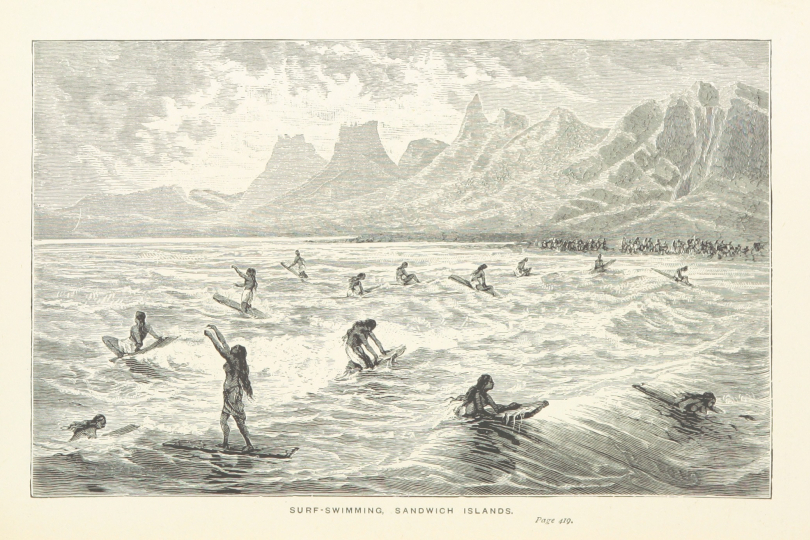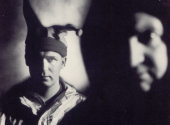
Milestones in Music History #33: The Challengers, Surfin' Boogie
La Monte Young's contribution to the development of experimental music, as we saw in our last episode, was remarkable. Yet at the same time, something completely different was happening on the opposite coast of the United States. California was a favourite destination for all overseas surfers, who would pass through there for a season or sometimes arrive never to leave again. Surfing would quickly associate itself with a musical genre, but it took some pioneers to open up this previously unexplored musical world. Such was the challenge taken up by the iconic surf rock group The Challengers.
Close your eyes. Imagine you are standing in front of a warm, rolling ocean. The wind breeze brushes against you as the waves roar and rumble over the rocks. Someone is sunbathing. Someone is taking a snack after a few hours of surfing. What would be the perfect music for this scenario?
What is now referred to as surf culture had distant origins, linked to practices used by Polynesian peoples – particularly in Hawaii and Tahiti. Joseph Banks, who travelled on the HMS Endeavour on the first great voyage of James Cook, arrived in Tahiti in 1769 and was the first to write about the art of surfing (heʻe nalu, in the Hawaiian language).
Surfing eventually landed on the West Coast in the early 19th century, at the hands of George Freeth, of partly native Hawaiian descent, but known as the first white man to master the technique of surfing. From there on, the practice developed along the coast very rapidly, until it became a sport.
In fact, for those who love surfing and especially for those who practice it – and in this, I see myself a lot, being one of them – surfing is not merely a sport. It is a relationship with the waves. With the ocean. The feeling of being part of the whole and at the same time being dwarfed by one of the most overwhelming natural forces. The world of surfing has always had a spiritual and in a certain sense, artistic component, which in popular culture found its best method of expression through music.
Surf music had its beginnings in the 1950s, and was characterised by being exclusively instrumental, performed with guitars using spring reverb. This effect was used to simulate the sound of sea waves and actually began to be incorporated into Fender amplifiers from 1963 onwards.
But the first 'wet' surf reverb was marketed in 1961, again by Fender, sold separately in the outboard Fender Reverb Unit. It was an epoch-making breakthrough and had a much 'wetter' sound than the built-in effect. It's what you hear in super famous surf tunes like The Surfaris' "Point Panic", or in "Pipeline" by the Chantays.
It was exactly at this moment in history that The Challengers took shape. They were actually born a few years earlier, in 1960, under the name The Bel-Airs. It was a typical high school band, but they had started to make a name for themselves through a song that became very popular, "Mr. Moto".
They were an unusual band because they had two drummers who alternated during gigs: Dick Dodd, a former member of The Standells; and Richard Delvy, who was also involved in surf music production and management at the time. The band actually split up following an argument over the use of the new Fender Reverb Unit.
Dick Dodd then joined Eddy & The Showmen, a band formed by Eddie Bertrand, guitarist and a former member of The Bel-Airs. Richard Delvy, on the other hand, had already formed a new band a year before the break-up of The Bel-Airs – in fact, this was The Challengers. He also invited keyboardist Jim Roberts and bassist Randy Nauert, former members of The Bel-Airs, to join his new project.
The band, which later incorporated additional members (Glenn Grey (lead guitar), Don Landis (rhythm guitar) and Nick Hefner (saxophone) began performing in clubs and discos in and around Los Angeles. They became quite successful, to the point that they were able to rent a recording studio, named World Pacific. In just a three-and-a-half-hour recording session, The Challengers had their first album.
Surfbeat was released on Vault Records in 1963 and became a huge hit. It is a seminal record and crazy for that era. Reverb guitars, wet and dreamy, accompany the rhythm and melodies typical of surf music. There is also psychedelia, rock and roll, a hint of funk and an early whiff of ska punk.
The album opens with "Mr. Moto", The Bel-Airs' historic hit, and continues with tracks that are impossible to forget: the rock and roll track "Ramrod"; the bluesy psychedelia of "Kami-Kaze", another song from The Bel-Airs period; and the experimental boogie "Torquay", by the rock and roll band The Fireballs. It also has the smash hits "Bulldog", again by The Fireballs; "Miserlou", which featured in the opening scene of the legendary film Pulp Fiction; and "Surfin' Safari", released some months before the album as a vocal single by The Beach Boys. It is an album that made history.
The band went on to record and release their second record, Lloyd Thaxton Goes Surfing With The Challengers, released in 1963, during the peak of the surf wave in California. Lloyd Thaxton was the host-producer of one of the most acclaimed TV music shows in Hollywood, The Lloyd Thaxton Show. This album was also very successful. Wallichs Music City dedicated one of its storefronts exclusively to the band and The Challengers made several TV appearances and large-audience concerts.
However, during the recording of their third LP, On The Move (Surfing Around The World), relations in the band soured. Richard Delvy and Randy Nauert remained in the band and were joined by Art Fisher and Ed Fournier on guitar and Phil Pruden on saxophone. Thus formed, the band released their most famous album, K-39, in 1964.
The band's success was now established. They released other musical works continuously until 1966, taking a slight change of direction towards pop and commercial music. Then they stopped, albeit with sporadic reunions, until 1994, when their final work, New Wave, produced by Richard Delvy, was released.
The way The Challengers interpreted the spirit of surf music was remarkable. They were masters in combining the fury of surf with the dynamism and expressiveness of rock. Moreover, they added psychedelia, boogie rhythms and blues, and gave originality and popularity to the genre.
This gives them a deserved place in our Milestones series. For our next meeting, instead, we will move to the old continent, to visit another great innovator and experimenter, but this time in the kraut-rock field: Manuel Göttsching.
How did surfing influence the musical production of surf rock? Is there only one musical genre capable of representing surfing? And what is the evolution of surf music today?
Leave your opinion in the comments below!
If you have found an error or typo in the article, please let us know by e-mail info@insounder.org.





